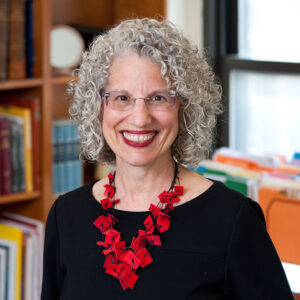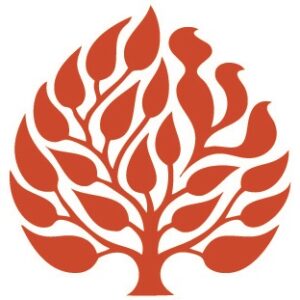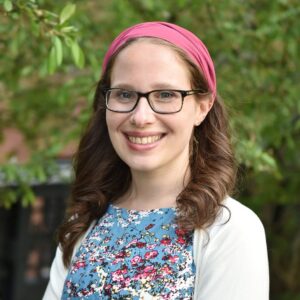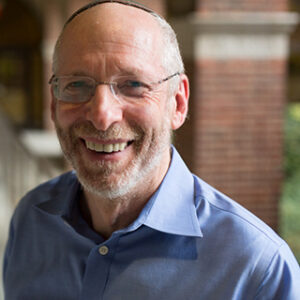
The Masks that We Wear
Feb 26, 2021 By Ofra Arieli Backenroth | Commentary | Tetzavveh | Purim
Growing up in Israel, Purim was a wonderful experience, full of fun and games. Dressing up, putting on masks, going to parties, and attending the Purim Parade in Tel Aviv—the Adloyada. This name is derived from a rabbinic saying in the Talmud that one should revel on Purim by drinking “until one no longer knows [how to distinguish between ‘cursed is Haman’ and ‘blessed is Mordecai’]” (BT Megillah 7b). Attending the parade was great fun, but also had a mysterious aspect. Who are the people hiding behind the masks? What are they concealing and what are they trying to reveal? It was all very colorful and happy but, in equal measure, scary and confusing.
Read More
Chancellor’s 5781 Hanukkah Message
Dec 11, 2020 By Shuly Rubin Schwartz | Short Video | Hanukkah
Chancellor Schwartz shares her thoughts for Hanukkah.
Read More
Miracles of Today
Dec 11, 2020 By Shuly Rubin Schwartz | Commentary | Hanukkah
One of the things I love most about Jewish holiday observances is their evolution over time and space even as core rituals remain. Hanukkah exemplifies this phenomenon. Established by the Hasmoneans to commemorate the victory of the Maccabees over Antiochus, Hanukkah in the Talmud (composed several centuries after these events) focuses on celebrating the miracle of the Temple oil lasting for eight days. With few prescribed mitzvot associated with the holiday, Hanukkah has long been ripe for creative interpretation: theological, sociological, culinary, musical, and artistic. The Hanukkiah itself illustrates its generativity, for it has been hewn from the humblest potato or the most ornate, intricately designed sterling silver; it can take the form of a tiny travel jigsaw puzzle or an enormous outdoor display.
Read More
Borukh Ate
Dec 7, 2020 By The Jewish Theological Seminary | Short Video | Hanukkah
“Borukh ate” zingt der tate—a father sings the opening words of the blessing, and kindles the light, and its soft rays fall on his pale face. With just a few words, the poet Avrom Reisen paints a picture of a slightly stooped, weary man, who somehow finds meaning and holiness in a simple act of lighting the Hanukkiah. The gentle melody, almost a lullaby, reminiscent of a folk song, yet soaring with emotion, was written by a composer Solomon Golub.
Read More
5781 High Holiday Message
Sep 18, 2020 By Shuly Rubin Schwartz | Short Video | Rosh Hashanah | Yom Kippur
Chancellor Schwartz shares her thoughts on the 5781 High Holiday season.
Read More
One Day More
Oct 9, 2020 By Rachel Rosenthal | Commentary | Shemini Atzeret
Of all of the holidays in the month of Tishrei, Shemini Atzeret is the most puzzling. Rosh Hashanah celebrates the new year for the world, Yom Kippur focuses on atonement and forgiveness, Sukkot is about joy and vulnerability. Even Simhat Torah, which is not mentioned in the Bible, has a clear purpose and clear rituals. But if asked to explain the purpose of Shemini Atzeret, beyond having the opportunity to pray for rain for the coming season, most people would be hard pressed to articulate what, exactly, this eighth day does for us, for God, or for the world.
Read More
We are All Sukkah-Dwellers
Oct 2, 2020 By Eliezer B. Diamond | Commentary | Sukkot
Since the accidental discovery of X-rays by Wilhelm Röntgen in 1895 and the subsequent creation of X-ray machines, we have been able to view our bodies through two different lenses. The first is what we see in the mirror—a body of flesh, which takes various forms and distinguishes one individual from another. The second is not visible to the naked eye; it is the skeletal structure that supports the flesh and organs that surround it. Though both are necessary constituent elements of our physical being, we are generally much more conscious of our outer being than our inner one. And yet, our bones are more durable than our flesh. Long after we die and our flesh has wasted away, our skeletal structure continues to exist.
Read More
Tip the Scales
Sep 18, 2020 By Shuly Rubin Schwartz | Commentary | Rosh Hashanah | Yom Kippur
“—who will live and who will die . . . who will come to an untimely end . . . . who by plague . . . who will be brought low, and who will be raised up?” (U-netaneh Tokef, from the High Holiday liturgy)
In my earliest memory of this prayer, I am a young girl standing between my mother and grandmother in synagogue amidst hundreds of others. Both women are sobbing uncontrollably, as they recited these words. I was puzzled by their outward display of anguish but knew enough not to interrupt them to ask what caused it. They grasped in a way I had yet to comprehend just how tenuous life is; they understood that this one prayer more than any other captures the fragility of human life that the Days of Awe magnify.
Read More


